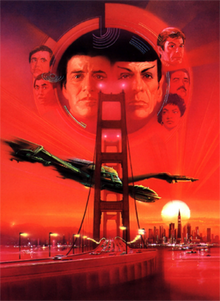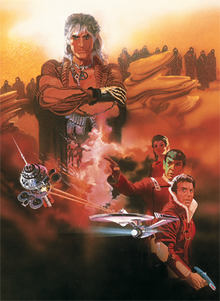As a writer, I have been told flashbacks should be used sparingly to advance the plot. But what if the entire plot of your story is a flashback? What if your story is a prequel to your original material? The jury is still out on whether or not the “prequel” is the right way to go about establishing the foundational concepts for the first part of a story, but what if the next part of the franchise isn’t as much a prequel as it is a “time travel sequel?” Obviously, these time travel sequels will most often be part of a science fiction franchise that could allow for time travel in the first place. Still, in these cases, there is character development that builds upon the previous films but also explores the origins of the stories themselves. This week’s two films highlight the effectiveness of a “time travel sequel.”
Star Trek IV: The Voyage Home
Year: 1986
Rating: PG
Length: 119 minutes / 1.98 hours
Obviously, the franchises that revolve around time travel will have time travel sequels. The clearest example of this would be Back to the Future Part III (1990). A lot can change in 100 years, and this film merely hammers home the point (which it does in the previous two parts as well) that the timeline of history can be changed. But what if your story is based in the distant future? For the characters who live in the 23rd century, going back in time by 300 years would essentially place them in the timeframe where we currently live. While we couldn’t know the impacts on the future that these 23rd-century characters might make to their timeline, the more interesting element to this scenario (as it is in any time travel sequel) is to see the differences between two drastically different eras.
What do you do when a mysterious probe is causing electrical disturbances throughout the universe? If you’re the crew of the USS Enterprise, you identify that the signal the probe is sending out is identical to the call of an extinct animal. Of course, with the animal needed to stop the probe having been completely eradicated, the only option is to travel back in time to retrieve one of them while they were still alive. For the crew of the Enterprise, this animal was the humpback whale, thus prompting them to travel back to 1986 and retrieve a few of them from San Francisco. Of course, going back 300 years had its challenges, but now modifying the spaceship to take the humpback whales into the future is its own challenge. Finally victorious, the crew returns to the future to answer the call of the probe, causing it to cease its destructive march across the universe.
Men in Black 3
Year: 2012
Rating: PG-13
Length: 106 minutes / 1.76 hours
Sometimes, time travel sequels can be done in a flashback context. For instance, The Godfather: Part II (1974) is both a prequel and a sequel to The Godfather (1972), splitting half it’s time developing the story of Michael Corleone (Al Pacino) in the late 1950s while also paralleling it with the rise of his father, Vito Corleone (Robert DeNiro), during the turn of the 20th century. In a similar vein, X-Men: Days of Future Past (2014) switches between an apocalyptic and dystopian future and the events in the 1970s that eventually led to this bleak timeline. Perhaps this is what makes a time travel sequel different from a flashback sequel (like The Godfather: Part II): a time travel sequel attempts to change something or collect something in the past to help save the future. This is certainly the case in the third installment of the Men in Black franchise: Men in Black 3 (2012).
Escaping from his prison on the moon, Boris the Animal (Jemaine Clement) sets out to take revenge on the agent who sent him there: Agent K (Tommy Lee Jones) of the Men in Black. Because the events that led to his capture also prevented his species from invading Earth, Boris travels back in time to eliminate the younger K. K’s partner, Agent J (Will Smith), is now the only one who recognizes that something is amiss. He doesn’t understand why everyone has forgotten about K, which leads Agent O (Emma Thompson) to deduce that the timeline has changed. Traveling back to 1969, J teams up with the younger K (Josh Brolin) to stop both past and future Boris from enacting his plan. Not only does J have to prevent K from being killed, but he now has to attach a defense system to Apollo 11 that will protect Earth for decades to come.
2 sum it up: 2 films, 2 retro sequels
